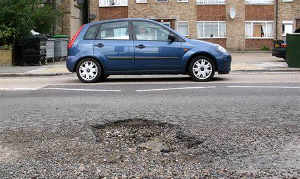Why commercial insurers’ biggest risk is relevancy
To ensure commercial P&C’s market relevance, insurers will need to find a way to address the “structurally changing nature of risk,” by closing protection gaps, said a recent McKinsey report.
There’s been a change in commercial insurance penetration in recent years, McKinsey noted. After adjusting for rate growth, global premiums lagged significantly (-11% in North America) behind real global GDP growth during the hard market of 2018-2021.
This is especially crucial as the nature of risks is evolving faster than ever, the report suggested. Three areas pose the most pressing coverage gaps for carriers: NatCat risk, the evolution of cyber risks and the transition toward a net-zero economy.
And, following a more than $3 billion year for insured losses in Canada, NatCat risk in particular is no small hurdle.
But the protection gap isn’t just a concern for McKinsey. Insurers are worried about global resilience and facilitating further protection for consumers, a recent Aon report suggested. The company found the protection gap is closer to 20% in Canada/North America in 2022.
To address this gap, insurers must adjust pricing to reflect the true cost of risk.
“For example, the industry tends to react to individual weather events, which can make coverage unaffordable the following year. Pricing models should take a longer-term view of changing weather patterns with a through-cycle approach to risks. This shift requires that commercial carriers apply advanced modeling to catastrophic events to determine whether a one-off weather event is a true anomaly or indicative of an emerging pattern,” the Global Insurance Report 2023 said.
Next, the unpredictable occurrences and ever-evolving measures taken by cybercriminals poses a threat for cyber insurers.
Globally, “commercial carriers are struggling to properly quantify risk exposure and adjust terms and conditions, as well as wordings — also, to consequently win the conviction of reinsurance capacity,” McKinsey noted. However, new frameworks to aid cyber catastrophes are beginning to emerge, which highlights ways that carriers are closing protection gaps.
For example, a newly created cyber catastrophe bond may enable insurers to create a broader reinsurance source for cyber risk, Canadian Underwriter previously reported.
And in Canada, the underwriting controls insurers took in 2020 and 2021 have started to pay off. Cyber claims have been moderating, and in some cases, declining, cyber insurers told CU.
Finally, the transition toward a net-zero economy could account for more than $800 billion in annual global capital expenditures in renewable energies and decarbonization technologies by 2030, McKinsey estimated. This will create new forms of risk that will require protection.
While clients are undertaking net-zero policies, these transitions are not widely covered by existing insurance solutions.
“But as commercial carriers analyze past claims patterns and collect additional third-party data, they can innovate on insurance coverage and underwriting practices — and enable better risk-engineering practices to accompany clients on their way to net-zero emissions,” said the report. “To provide coverage for net-zero transition risks, commercial carriers must build the capabilities to underwrite prototype-like risks, such as for decarbonization technologies, including carbon capture and energy storage.”
Feature image by iStock.com/DNY59



